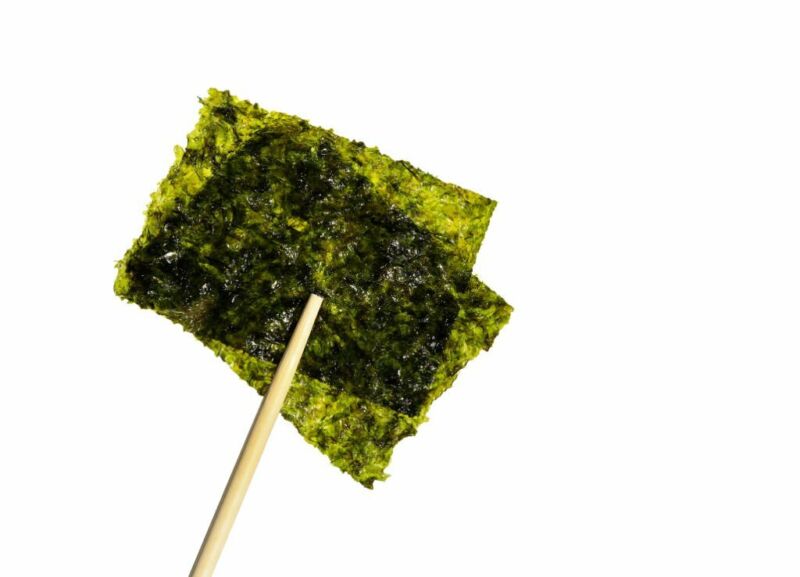Can You Eat Expired Seaweed?
Seaweed has become an increasingly popular food source in recent years. Packed with vitamins, minerals, antioxidants, and unique bioactive compounds, seaweed offers numerous nutritional and health benefits. However, like any perishable food, seaweed does expire and eating spoiled seaweed can potentially make you sick.
So how do you know if the seaweed you have is still safe to eat? In this article, I’ll cover everything you need to know about seaweed shelf life, signs of spoilage, and how to extend freshness. I’ll also provide tips for alternative uses for expired seaweed so none of it goes to waste.
A Quick Overview of Seaweed Types and Nutrition
Seaweed refers to a broad group of marine macroalgae or sea plants that grow along coastal regions around the world. There are thousands of different seaweed species, but some of the most common edible varieties include:
- Nori – thin dark purple-black sheets used to wrap sushi
- Kelp – thick leafy greens that can grow over 50 meters long
- Dulse – reddish purple tender leaves with a salty taste
- Wakame – sweet mild-tasting seaweed used in soups and salads
- Arame – wiry black strands with a sweet and mild flavor
Seaweeds are highly nutritious, low in calories, and packed with:
- Vitamins – A, B, C, E, K
- Minerals – iodine, calcium, iron, magnesium
- Antioxidants – carotenoids, flavonoids
- Fiber – alginates, laminarins, fucoidans
Some research suggests seaweed may help reduce heart disease, aid digestion and gut health, stabilize blood sugar levels, and support thyroid and immune function.
So while seaweed makes a healthy addition to one’s diet, like any perishable food, it’s important to pay attention to proper storage and freshness to get the most nutritional benefit.
The Shelf Life of Seaweed Varies
The shelf life of seaweed depends on a few key factors:
- Type of seaweed – Some have naturally longer shelf lives. Wakame and kombu can last years dried. Nori’s shelf life is shorter at just months.
- Processing method – Dried seaweed lasts much longer than fresh or frozen. Freeze-dried seaweed keeps the longest – up to 10 years.
- Storage conditions – Refrigeration, freezing, darkness, vacuum packaging all extend shelf life. Heat, light, air exposure decreases it.
As a general guideline, the shelf life of seaweed is:
- Fresh seaweed – 7-10 days
- Frozen seaweed – 6-12 months
- Dried seaweed – 6 months to 5 years
- Vacuum-packed – 1-2 years
Of course, proper storage is key. An opened package of dried wakame stored in a hot kitchen won’t last nearly as long as an unopened pack kept in the pantry.
So does seaweed expire? Not exactly in the sense of dairy or meat, which can become unsafe to eat. But seaweed does have a point where quality and nutrition decline due to spoilage.
Look for Signs of Spoilage in Seaweed
Seaweed may not have an expiration date, but it will show signs when it starts to spoil. Here’s what to look for:
- Change in color – Fading, yellowing, darkening, or spotting
- Soft, mushy texture – Especially in dried seaweed, which should be brittle
- Sliminess – A clear, slippery coating on the surface
- Strong fishy or ammonia smell – Should have a fresh ocean aroma
- Mold growth – Cottony, fuzzy patches or black/green spots
- Rancid odor – Smells unpleasant, rotten, or sour
If you notice any of these signs, the seaweed has likely spoiled and should be discarded. Consuming rancid seaweed can cause foodborne illness.
Discoloration and smell are typically the first indications of seaweed going bad. If it fails the sight and sniff tests, don’t risk eating it.
Extending the Freshness of Seaweed
Want to keep seaweed fresher for longer? Here are some effective methods:
Proper Storage
Store dried seaweed in a cool, dark place in an airtight container. Exposure to light, heat, and air will cause the oils in seaweed to go rancid faster.
Refrigerate fresh seaweed in a perforated plastic bag. This prevents moisture buildup.
Keep frozen seaweed at 0°F or below for best preservation. Avoid repeated thawing and refreezing.
Freezing
Freezing is a great way to extend the shelf life of fresh seaweed. Blanch first by dipping in boiling water for 30 seconds to 1 minute. Allow to cool, then pack into freezer bags, removing excess air.
Frozen seaweed will last 6-12 months at 0°F. It may darken but is still safe to eat when thawed. Rinse to refresh texture.
Drying
Dried seaweed can keep for months or years. Gently pat fresh seaweed dry, then use a dehydrator or low oven until completely dry and brittle.
Vacuum sealing dried seaweed removes oxygen to prevent oxidation and deterioration. Store in a cool, dark place.
Other Tips
- Buy seaweed from reputable sources and check packaging dates
- Rinse seaweed before use to remove excess salt and rehydrate
- Cook seaweeds like kombu and wakame before consuming
- Limit light and air exposure once packaging is opened
Following basic food safety practices helps maintain seaweed’s quality and freshness.
Alternative Uses for Expired Seaweed
If you do end up with some spoiled seaweed, there are still eco-friendly ways to use it:
Add to Your Compost
Seaweed makes an excellent natural fertilizer and soil amendment. Its minerals, trace elements, carbohydrates, and amino acids feed soil microbiota and plants.
Chop or shred the seaweed first to break it down faster. Use it fresh or dried. Just avoid seaweeds treated with preservatives.
Create Your Own Face Mask
Harness the antioxidant and anti-inflammatory powers of seaweed for your skin.
Blend 1-2 tablespoons of dried seaweed with a bit of water or aloe vera gel to form a spreadable paste. Apply to face and leave on 15 minutes before rinsing.
Brown seaweeds like kelp are great for masks. You’ll get a nourishing, detoxifying treatment.
Use as a Natural Dye
Certain seaweeds produce vivid and long-lasting dyes. Dulse yields a beautiful purple-red. Laminaria makes a rusty reddish-brown.
Simmer the seaweed in water until the desired color is achieved. Strain and use the liquid as an all-natural, non-toxic dye for clothing and crafts.
So while you don’t want to eat spoiled seaweed, you can still utilize it and avoid waste.
Key Takeaways on Seaweed Shelf Life and Safety
To recap, the key things to remember about seaweed expiration and safety:
- Seaweed does not have a standard expiration date, but its maximum shelf life depends on the variety and storage conditions. Proper storage is crucial.
- Dried seaweeds like nori, wakame, and dulse can have shelf lives up to 5 years. Fresh seaweed lasts just 7-10 days.
- Signs of spoiled seaweed include changes in color, odor, texture, and sliminess. Mold or rancid smells mean discard!
- You can extend freshness through freezing, drying, vacuum sealing, and refrigeration. Limit light and air exposure.
- Composting and creating DIY skincare are eco-friendly ways to use expired seaweed. Avoid consuming spoiled seaweed.
I hope this article has helped explain the shelf life of different seaweeds and how to identify and avoid spoiled seaweed. Always inspect seaweed products closely and adhere to safe storage to enjoy their many nutritional benefits.
With some care and common sense, seaweed can be a healthy and sustainable addition to any diet. Let me know if you have any other questions!






